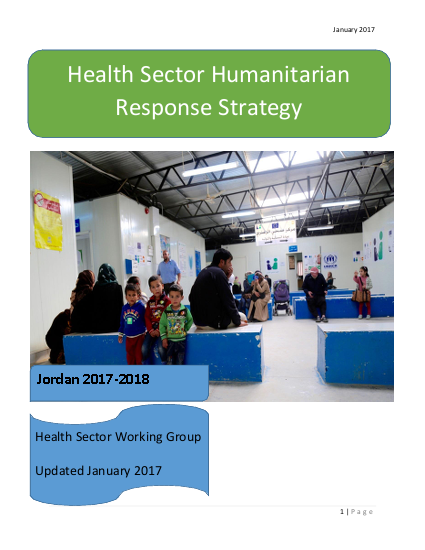
In early 2014, a Health Sector Strategic Advisory Group (SAG) for the Humanitarian Response was formed to further support the work of the Health Sector Working Group in Jordan. One of the SAG’s main tasks1 was to develop the Health Sector Humanitarian Response Strategy, expanding upon the existing response strategy and objectives present in the Syria Regional Refugees Response Plan (3RP). This was updated in late 2016 to incorporate the latest response strategy, as well as reflect significant changes made to the national health policy of provision of services to registered Syrian refugees.
This document, which will be periodically updated, outlines the context of the humanitarian response in Jordan, particularly highlighting the Syrian refugee crisis and its implications on the national health system. Virtually all the data and figures in the strategy are related to Syrian refugees, as a large number of assessments have been carried out with this population in recent years. It is important to note, however, that the humanitarian response in Jordan also addresses refugees of nationalities other than Syrian, as well as the affected vulnerable Jordanian population. In addition to Syrian refugees, Jordan is also host to a significant Iraqi, government estimate about 600,000 Iraqis reside in country while refugee population are about 60,000 and also to refugees of other nationalities (nearly 10,000), testament to the Kingdom’s long history of providing safe haven to those fleeing strife in their homeland. over 1.2 million Syrians living in Jordan based on 2016 census data, the numbers of Syrians who have sought refuge here (over 655,000 to date), and the resulting impact on the national infrastructure has required ongoing humanitarian support. As the crisis continues, there is a need to shift focus from short-term interventions to longer and more sustainable ones, expanding national capacity to respond to this, and future crises. During that transition, adequate health coverage must continue to be provided for all affected populations.